A Theoretically Derived Probability Distribution of Scour
Abstract
1. Introduction
2. Hydraulic Assumptions
3. The Theoretically Derived Distribution of Scour (TDDS)
3.1. Simplified Rectangular Flood Hydrograph
3.2. Exponential Flood Hydrograph
4. Examples Applications
4.1. Parameters of the BRISENT
4.2. Sensitivity Analysis
4.3. Application to a Real Context
- The parameters of the flood distribution were computed from the time series of annual maxima (Figure 8B). Several methods exist to estimate parameters of a Gumbel distribution; we used the method of moments for the sake of simplicity. Given the mean value was m3/s and the standard deviation was m3/s, Gumbel parameters were m3/s and m3/s
- Parameter k was estimated from recorded hydrographs. In the present case the duration of the hydrograph was set equal to 10 h.
- BRISENT parameters were estimated following Pizarro et al. [13]. Considering that the pier diameter was m and the grain-size was mm, the ratio reached a value of 1363.6. Using Equations (24)–(26), the BRISENT parameters were: , , and .
5. Conclusions
Author Contributions
Funding
Acknowledgments
Conflicts of Interest
Abbreviations
| a [m] | Coefficient of the power law cross-section area function of H |
| b[-] | Exponent of the power law cross-section area function of H |
| c [1/s] | Coefficient of the power law mean flow velocity function of H |
| d[-] | Exponent of the power law mean flow velocity function of H |
| [1/m2] | Coefficient of the power law mean flow velocity function of Q |
| [-] | Exponent of the power law mean flow velocity function of Q |
| [-] | location parameter of the Gumbel distribution |
| b1 [m3/s] | scale parameter of the Gumbel distribution |
| D [m] | Pier diameter |
| [m] | Sediment grain-size |
| g [m/s] | Acceleration of gravity |
| H [m] | Flow depth |
| k [s] | Duration of a rectangular hydrograph |
| [-] | BRISENT coefficient |
| [sec] | Characteristic time |
| [m2] | Cross-section area |
| pq(Q) [-] | Probability density function of floods |
| pv(V) [-] | Probability density function of velocities |
| pz*(Z*) [-] | Probability density function of dimensionless scour |
| pz(z) [-] | Probability density function of scour |
| Q [m3/s] | River discharge |
| Qmax [m3/s] | Maximum river discharge in a flood event |
| [kg/m3] | Relative density |
| [kg/m3] | Sediment density |
| [kg/m3] | Water density |
| S [-] | Entropic-scour parameter |
| t [s] | Time |
| tend [s] | Time in which a hydrograph is able to make work |
| tR [s] | Reference time |
| uc [m/s] | Critical velocity for the initiation of sediment motion |
| ucs [m/s] | Critical velocity for the incipient scour |
| uR [m/s] | Reference velocity |
| V [m/s] | Cross-section-averaged velocity |
| W* [-] | Dimensionless, effective flow work |
| W*max [-] | Maximum possible W*, according to BRISENT formulation |
| Z* [-] | Normalized scour depth |
| Z*max [-] | Maximum possible Z*, according to BRISENT formulation |
| zR [m] | Reference scour depth |
References
- Proske, D. Bridge Collapse Frequencies versus Failure Probabilities; Springer: Berlin/Heidelberg, Germany, 2018; ISBN 3319738321. [Google Scholar]
- Melville, B.W.; Coleman, S.E. Bridge Scour; Water Resources Publication: Littleton, CO, USA, 2000; ISBN 1887201181. [Google Scholar]
- Arneson, L.A.; Zevenbergen, L.W.; Lagasse, P.F.; Clopper, P.E. Evaluating Scour at Bridges (Hydraulic Engineering Circular No. 18, 5th ed.; FHWA-HIF-12-003; US DOT: Washington, DC, USA, 2012.
- Flint, M.M.; Fringer, O.; Billington, S.L.; Freyberg, D.; Diffenbaugh, N.S. Historical Analysis of Hydraulic Bridge Collapses in the Continental United States. J. Infrastruct. Syst. 2017, 23, 4017005. [Google Scholar] [CrossRef]
- Link, O.; Henríquez, S.; Ettmer, B. Physical scale modelling of scour around bridge piers. J. Hydraul. Res. 2018, 1–11. [Google Scholar] [CrossRef]
- Richardson, E.V.; Davis, S.R. Evaluating Scour at Bridges; Hydraulic Engineering Circular (HEC) No. 18; US DOT: Washington, DC, USA, 2001.
- Ettema, R.; Melville, B.W.; Constantinescu, G. Evaluation of Bridge Scour Research: Pier Scour Processes and Predictions; Transportation Research Board of the National Academies: Washington, DC, USA, 2011. [Google Scholar]
- Lu, J.-Y.; Hong, J.-H.; Su, C.-C.; Wang, C.-Y.; Lai, J.-S. Field measurements and simulation of bridge scour depth variations during floods. J. Hydraul. Eng. 2008, 134, 810–821. [Google Scholar] [CrossRef]
- Su, C.-C.; Lu, J.-Y. Comparison of Sediment Load and Riverbed Scour during Floods for Gravel-Bed and Sand-Bed Reaches of Intermittent Rivers: Case Study. J. Hydraul. Eng. 2016, 142, 5016001. [Google Scholar] [CrossRef]
- Hager, W.H.; Unger, J. Bridge pier scour under flood waves. J. Hydraul. Eng. 2010, 136, 842–847. [Google Scholar] [CrossRef]
- Guo, J. Semi-analytical model for temporal clear-water scour at prototype piers. J. Hydraul. Res. 2014, 52, 366–374. [Google Scholar] [CrossRef]
- Link, O.; Castillo, C.; Pizarro, A.; Rojas, A.; Ettmer, B.; Escauriaza, C.; Manfreda, S. A model of bridge pier scour during flood waves. J. Hydraul. Res. 2017, 55. [Google Scholar] [CrossRef]
- Pizarro, A.; Samela, C.; Fiorentino, M.; Link, O.; Manfreda, S. BRISENT: An Entropy-Based Model for Bridge-Pier Scour Estimation under Complex Hydraulic Scenarios. Water 2017, 9, 889. [Google Scholar] [CrossRef]
- Pizarro, A.; Ettmer, B.; Manfreda, S.; Rojas, A.; Link, O. Dimensionless effective flow work for estimation of pier scour caused by flood waves. J. Hydraul. Eng. 2017, 143. [Google Scholar] [CrossRef]
- Manfreda, S. On the derivation of flow rating-curves in data-scarce environments. J. Hydrol. 2018, 562, 151–154. [Google Scholar] [CrossRef]
- Hamed, K.; Rao, A.R. Flood Frequency Analysis; CRC Press: Boca Raton, FL, USA, 1999. [Google Scholar]
- Iacobellis, V.; Fiorentino, M.; Gioia, A.; Manfreda, S. Best Fit and Selection of Theoretical Flood Frequency Distributions Based on Different Runoff Generation Mechanisms. Water 2010, 2, 239–256. [Google Scholar] [CrossRef]
- Cunnane, C. Methods and merits of regional flood frequency analysis. J. Hydrol. 1988, 100, 269–290. [Google Scholar] [CrossRef]
- Fiorentino, M.; Gabriele, S.; Rossi, F.; Versace, P. Hierarchical Approach for Regional Flood Frequency Analysis. Reg. Flood Freq. Anal. 1987, 3549. Available online: http://www.diia.unina.it/pdf/pubb0550.pdf (accessed on 23 October 2018).
- Hosking, J.R.M.; Wallis, J.R. Some statistics useful in regional frequency analysis. Water Resour. Res. 1993, 29, 271–281. [Google Scholar] [CrossRef]
- Smith, A.; Sampson, C.; Bates, P. Regional flood frequency analysis at the global scale. Water Resour. Res. 2015, 51, 539–553. [Google Scholar] [CrossRef]
- Natural Environmental Research Council (NERC). Estimation of Flood Volumes over Different Duration. In Flood Studies Report; NERC: London, UK, 1975; Volume I, pp. 352–373. [Google Scholar]
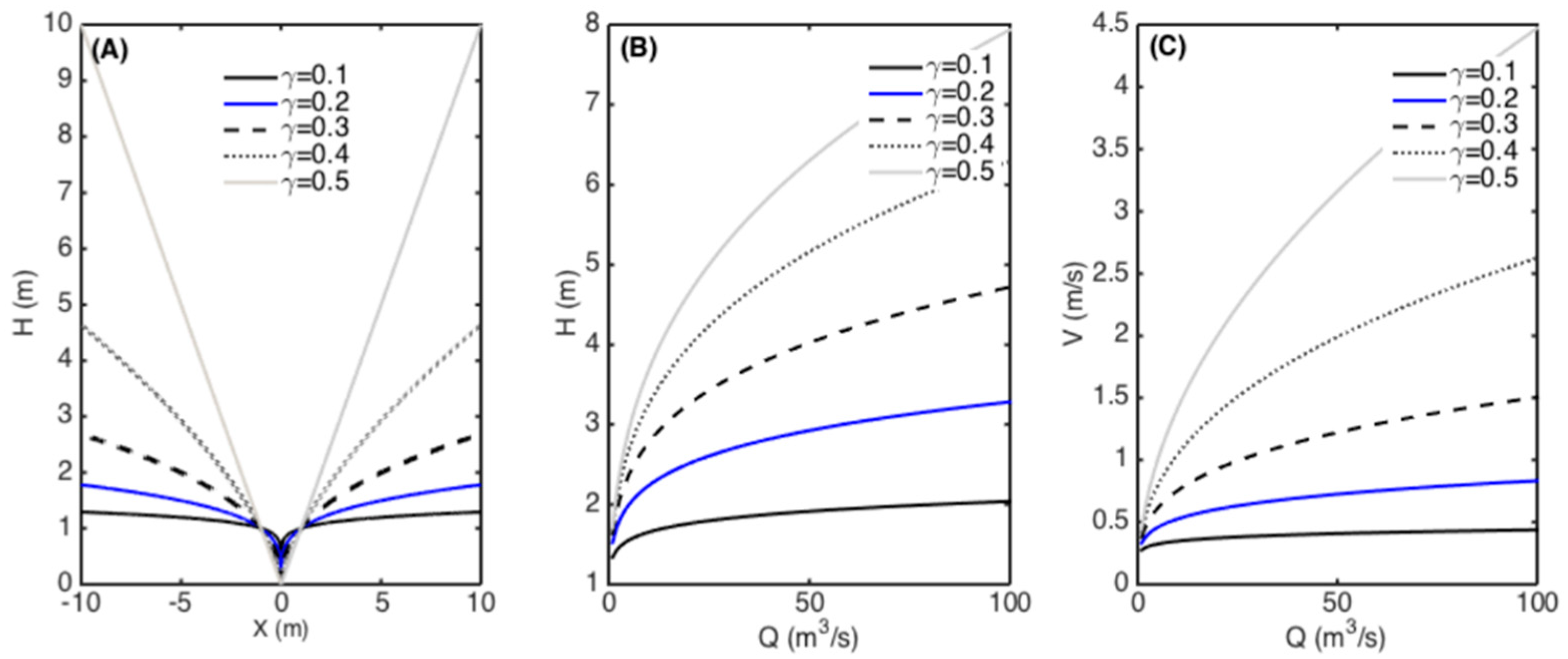
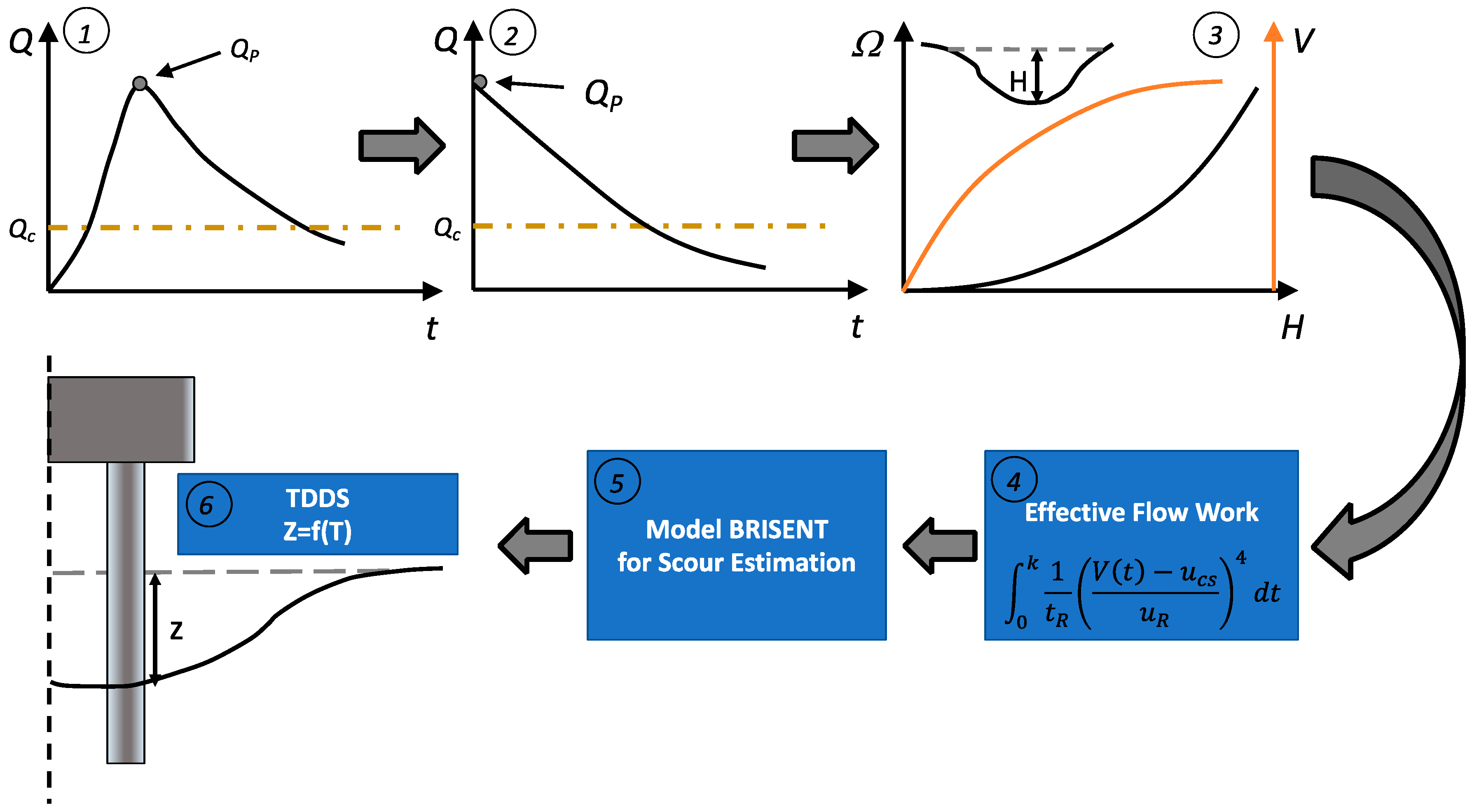
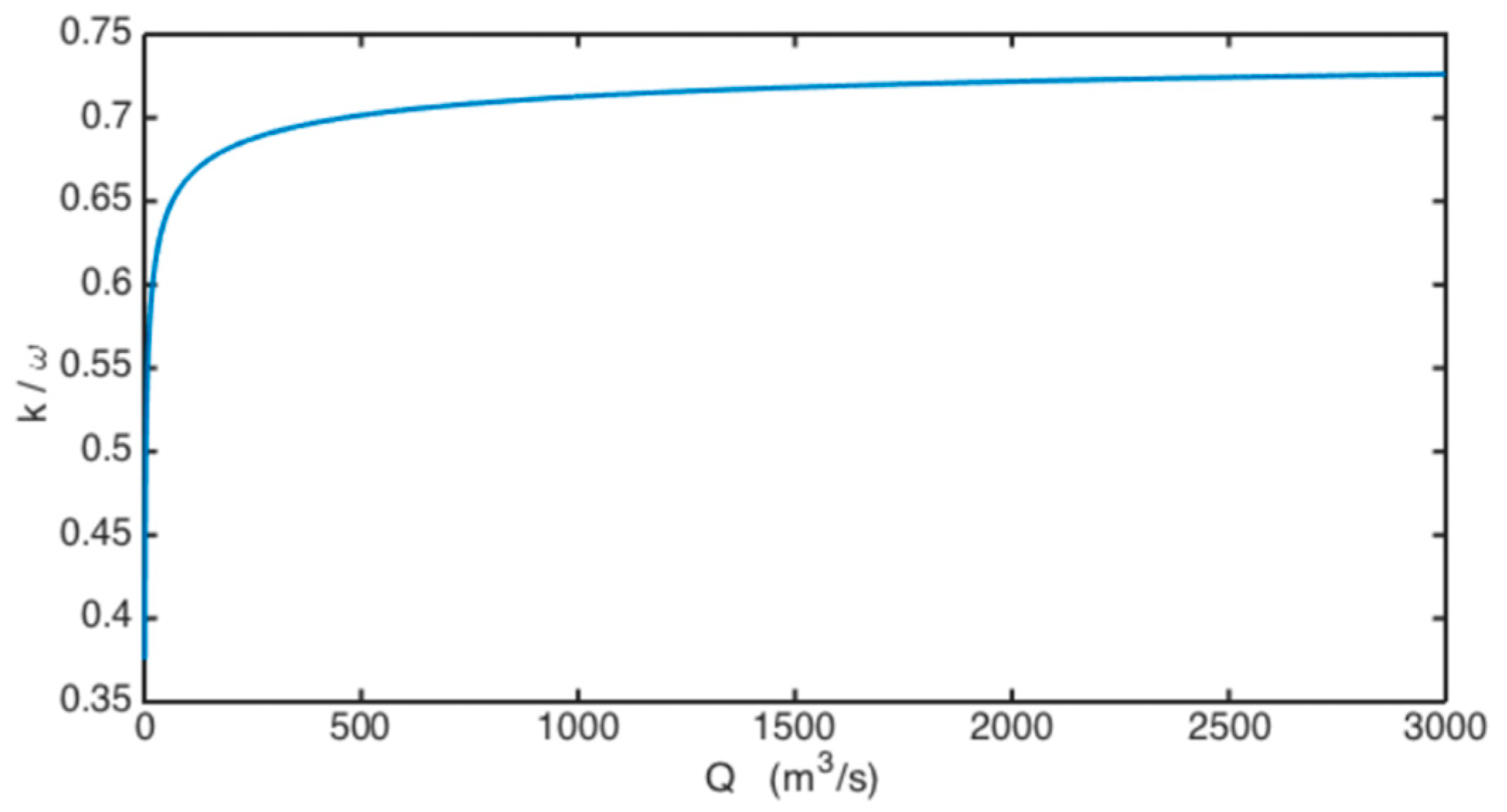
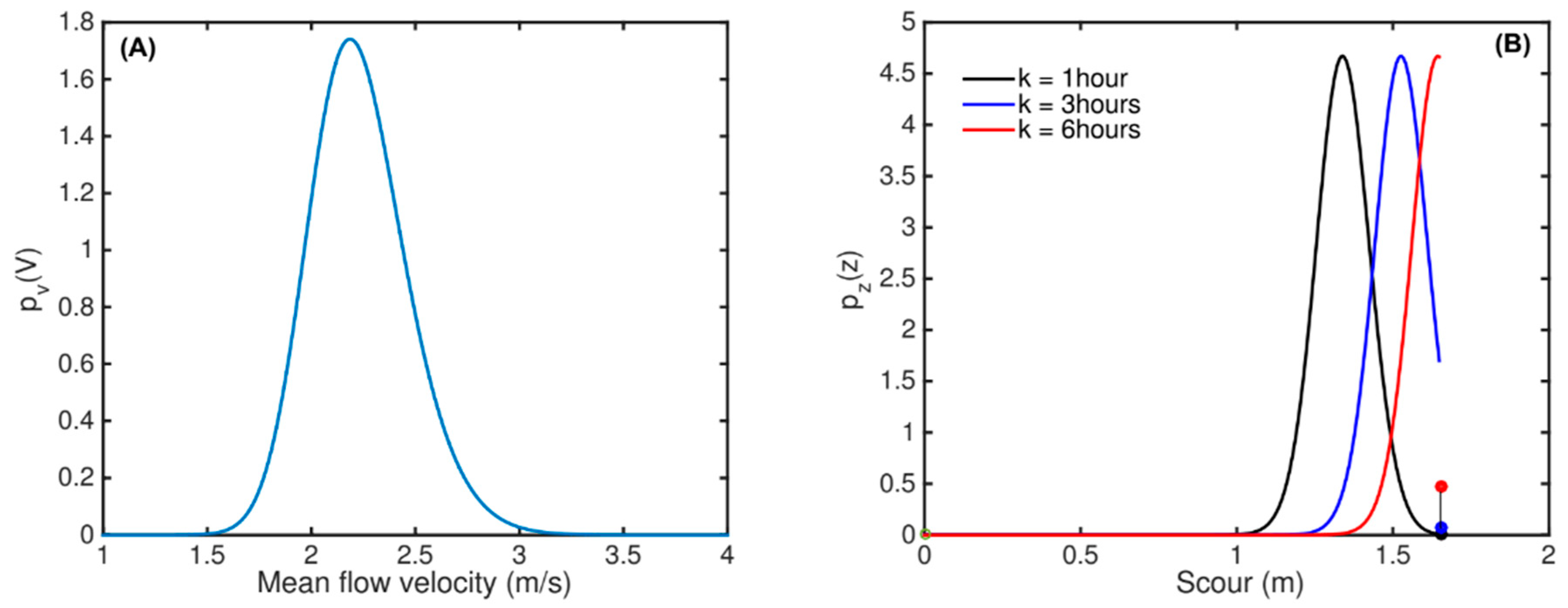
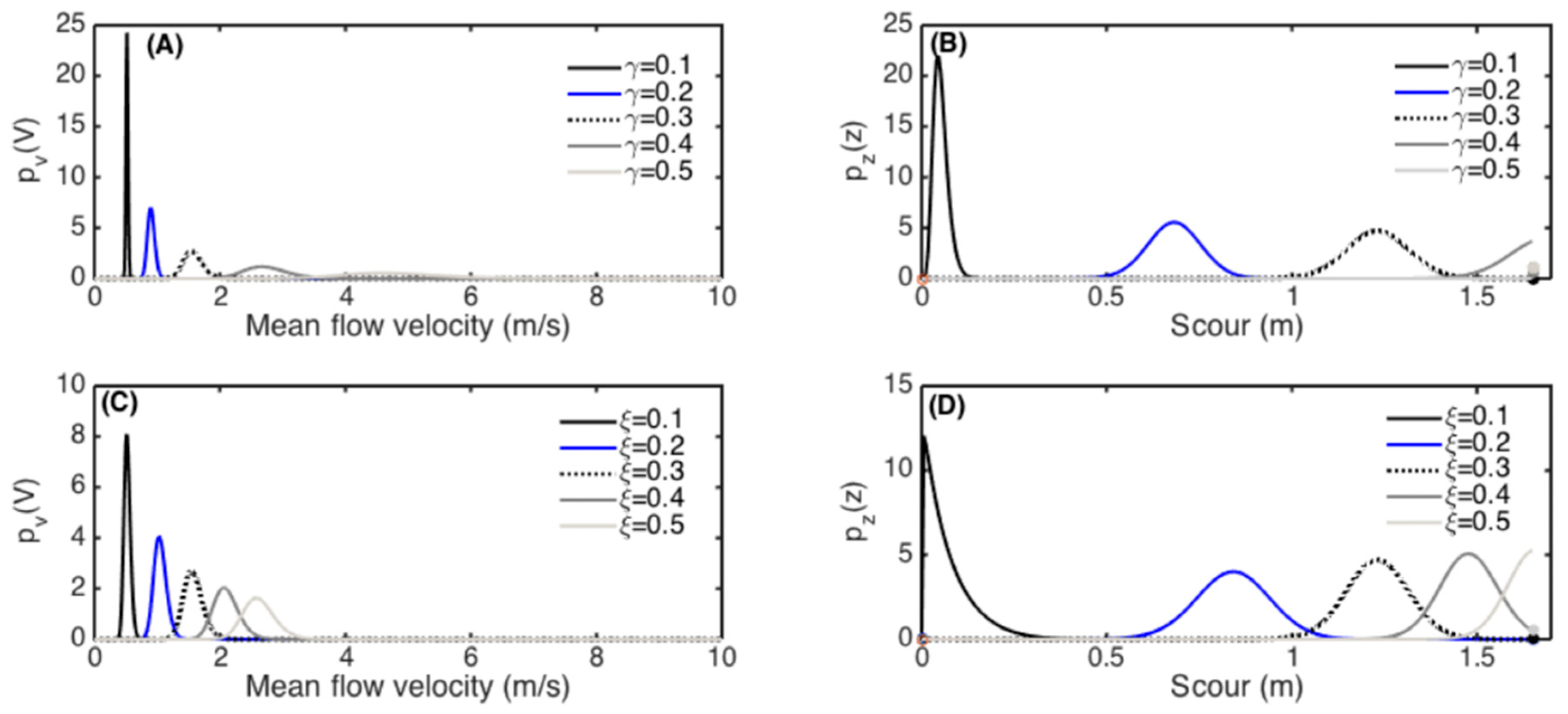
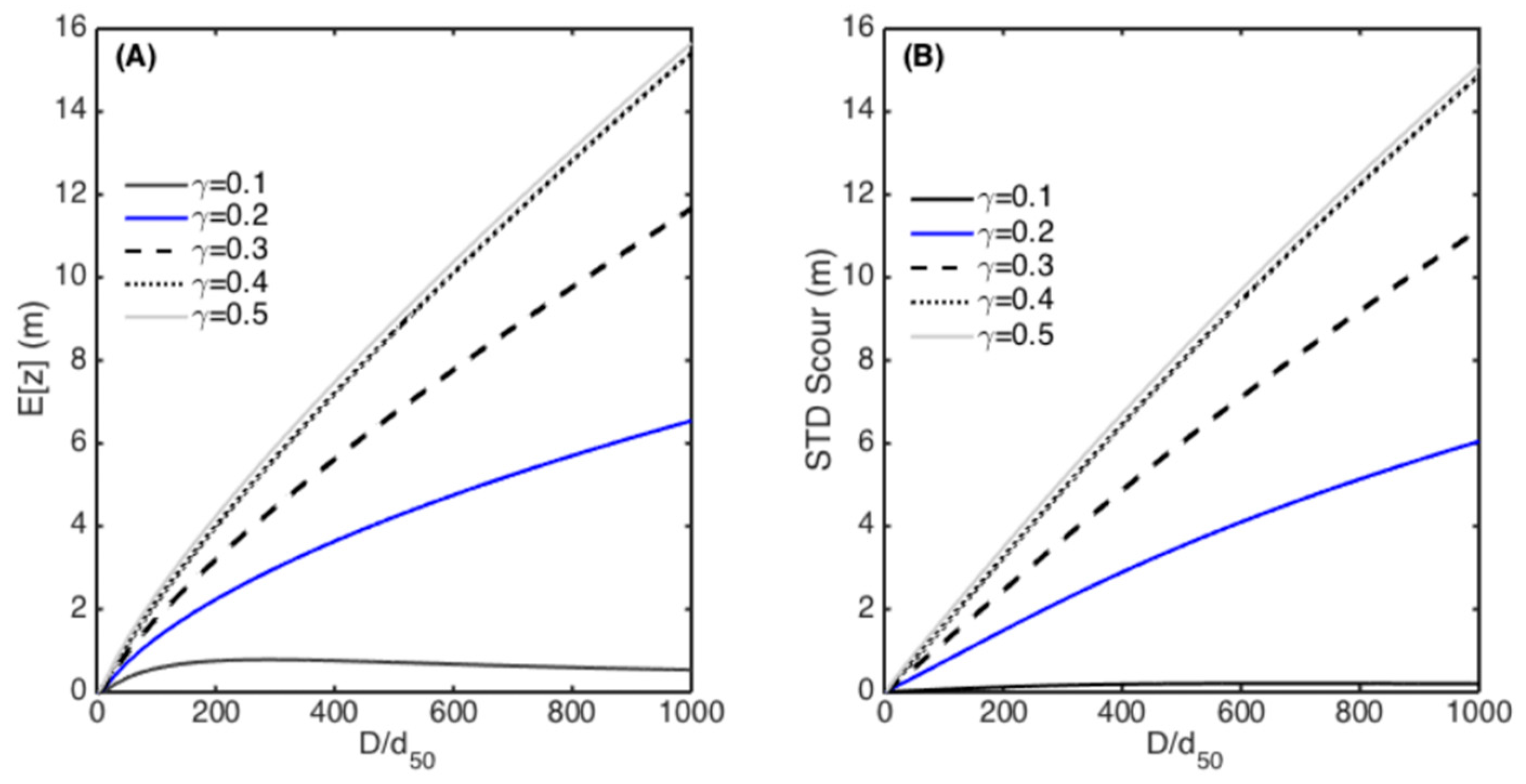
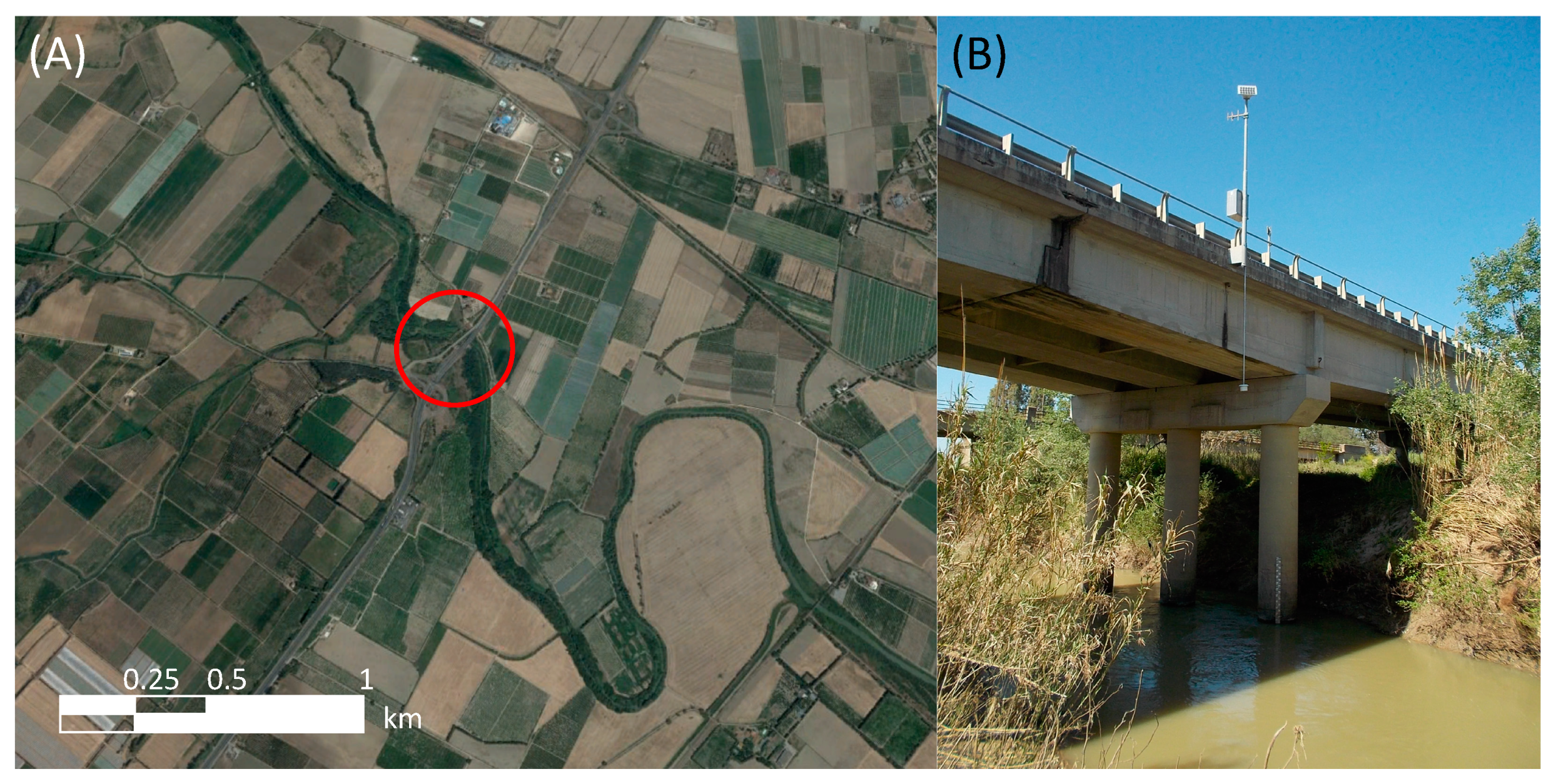
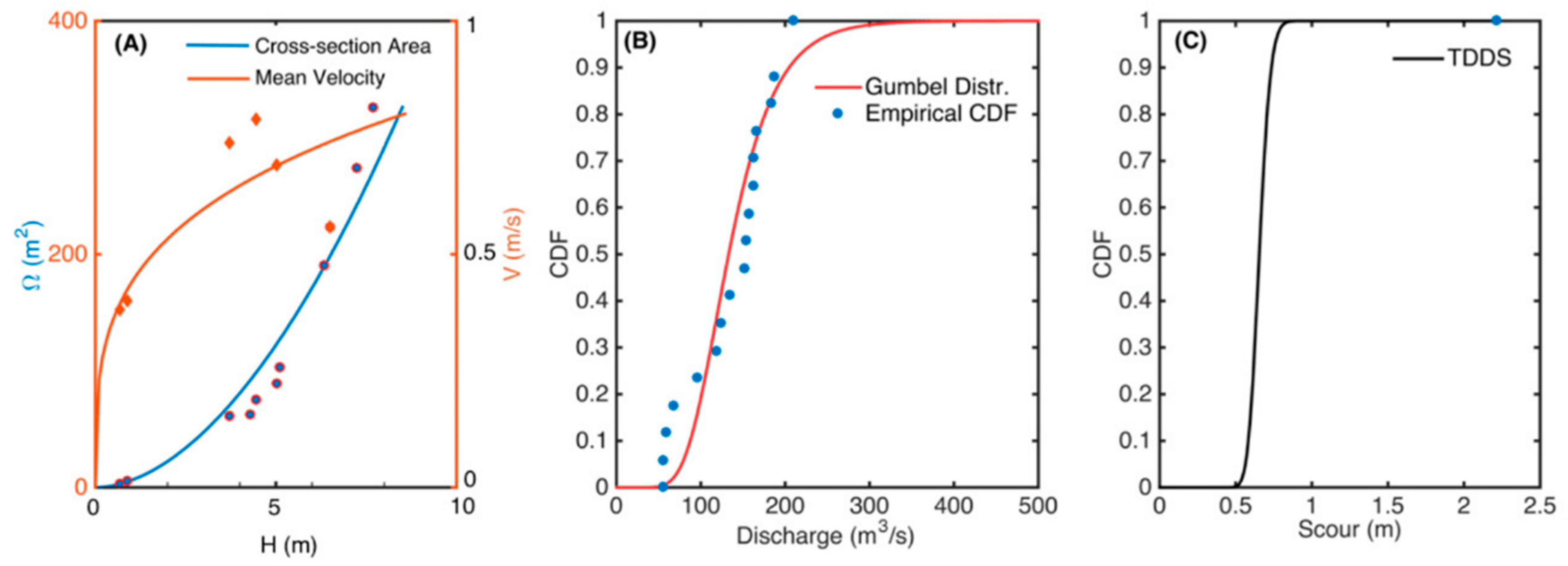
| Description | Data |
|---|---|
| Cross-section | Basento SS 106 |
| River Basin Area (km2) | 1520 |
| E[Q] (m3/s) | 141 |
| σ[Q] (m3/s) | 49 |
| Pier Diameter D (m) | 1.5 |
| Sediment Size d50 (mm) | 1.1 |
| Number of Piers | 4 |
| Bridge Length (m) | 15 |
© 2018 by the authors. Licensee MDPI, Basel, Switzerland. This article is an open access article distributed under the terms and conditions of the Creative Commons Attribution (CC BY) license (http://creativecommons.org/licenses/by/4.0/).
Share and Cite
Manfreda, S.; Link, O.; Pizarro, A. A Theoretically Derived Probability Distribution of Scour. Water 2018, 10, 1520. https://doi.org/10.3390/w10111520
Manfreda S, Link O, Pizarro A. A Theoretically Derived Probability Distribution of Scour. Water. 2018; 10(11):1520. https://doi.org/10.3390/w10111520
Chicago/Turabian StyleManfreda, Salvatore, Oscar Link, and Alonso Pizarro. 2018. "A Theoretically Derived Probability Distribution of Scour" Water 10, no. 11: 1520. https://doi.org/10.3390/w10111520
APA StyleManfreda, S., Link, O., & Pizarro, A. (2018). A Theoretically Derived Probability Distribution of Scour. Water, 10(11), 1520. https://doi.org/10.3390/w10111520








